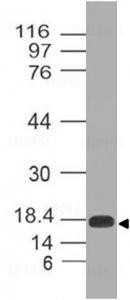Cookie preferences
This website uses cookies, which are necessary for the technical operation of the website and are always set. Other cookies, which increase the comfort when using this website, are used for direct advertising or to facilitate interaction with other websites and social networks, are only set with your consent.
Configuration
Technically required
These cookies are necessary for the basic functions of the shop.
"Allow all cookies" cookie
"Decline all cookies" cookie
CSRF token
Cookie preferences
Currency change
Customer-specific caching
FACT-Finder tracking
Individual prices
Selected shop
Session
Comfort functions
These cookies are used to make the shopping experience even more appealing, for example for the recognition of the visitor.
Note
Show the facebook fanpage in the right blod sidebar
Statistics & Tracking
Affiliate program
Conversion and usertracking via Google Tag Manager
Track device being used

%
Discount Promotion
Promotion:
Get 15% Discount on Antibodies and Biosimilars by Abeomics!
*1
*1 Offer expires 30/06/2024
| Item number | Size | Datasheet | Manual | SDS | Delivery time | Quantity | Discount | Price |
|---|---|---|---|---|---|---|---|---|
| ABE-10-10021-100 | 100 µg | - |
3 - 11 business days* |
15 %
|
418.00€
355.30€ |
If you have any questions, please use our Contact Form.
You can also order by e-mail: info@biomol.com
Larger quantity required? Request bulk
You can also order by e-mail: info@biomol.com
Larger quantity required? Request bulk
The Sudan ebola virus (SUDV) glycoprotein (GP) is an envelope glycoprotein that is present on the... more
Product information "Anti-Ebola GP II (Clone: ABM4C78)"
The Sudan ebola virus (SUDV) glycoprotein (GP) is an envelope glycoprotein that is present on the virion surface and is involved in receptor binding and mediating viral entry. It is composed of a trimer of heterodimers (GP1/GP2), where GP1 and GP2 remain covalently linked by a disulfide bond9, and the resulting GP1-GP2 pair trimerizes to form a ~450 kDa envelope spike on the viral surface. GP is synthesized as a single polypeptide of 676 amino acids in length that is post-translationally cleaved by furin to yield two subunits, GP1 and GP2. The GP2 subunit mediates virus-cell membrane fusion and viral entry. Structural analysis of the core domain of Ebola virus GP2 indicates that the fusion-active conformation of GP2 is similar to that of the other class I membrane fusion proteins, suggesting a common membrane fusion mechanism. In the endosome, GP2 releases from GP1 and undergoes irreversible conformational changes that drive fusion with host endosomal membranes. GP2 contains an N-terminal peptide, a hairpin-forming fusion loop, and two heptad repeats connected by a functionally important linker. The first heptad repeat of GP2 is wound around the base of GP1 in a metastable, prefusion-specific conformation. Protein function: GP1 is responsible for binding to the receptor(s) on target cells. Interacts with CD209/DC-SIGN and CLEC4M/DC-SIGNR which act as cofactors for virus entry into the host cell. Binding to CD209 and CLEC4M, which are respectively found on dendritic cells (DCs), and on endothelial cells of liver sinusoids and lymph node sinuses, facilitate infection of macrophages and endothelial cells. These interactions not only facilitate virus cell entry, but also allow capture of viral particles by DCs and subsequent transmission to susceptible cells without DCs infection (trans infection). Binding to the macrophage specific lectin CLEC10A also seem to enhance virus infectivity. Interaction with FOLR1/folate receptor alpha may be a cofactor for virus entry in some cell types, although results are contradictory. Members of the Tyro3 receptor tyrosine kinase family also seem to be cell entry factors in filovirus infection. Once attached, the virions are internalized through clathrin-dependent endocytosis and/or macropinocytosis. After internalization of the virus into the endosomes of the host cell, proteolysis of GP1 by two cysteine proteases, CTSB/cathepsin B and CTSL/cathepsin L presumably induces a conformational change of GP2, allowing its binding to the host entry receptor NPC1 and unmasking its fusion peptide to initiate membranes fusion. [The UniProt Consortium]
| Keywords: | Anti-GP, Monoclonal Antibody to Ebola GP II (Clone: ABM4C78) |
| Supplier: | Abeomics |
| Supplier-Nr: | 10-10021 |
Properties
| Application: | WB |
| Antibody Type: | Monoclonal |
| Clone: | ABM4C78 |
| Conjugate: | No |
| Host: | Mouse |
| Immunogen: | A partial Length recombinant GP II protein (N terminus 155aa) of Sudan Ebola virus was used as an immunogen for this antibody. |
| Format: | Purified |
Database Information
| KEGG ID : | K24534 | Matching products |
| UniProt ID : | Q7T9D9 | Matching products |
| Gene ID | GeneID 3160774 | Matching products |
Handling & Safety
| Storage: | +4°C |
| Shipping: | +4°C (International: +4°C) |
Caution
Our products are for laboratory research use only: Not for administration to humans!
Our products are for laboratory research use only: Not for administration to humans!
Information about the product reference will follow.
more
You will get a certificate here
-15 %
Discount Promotion
Viewed





